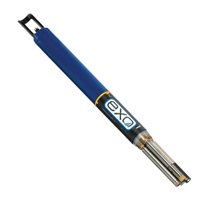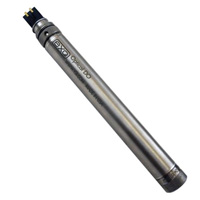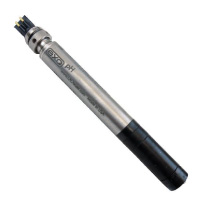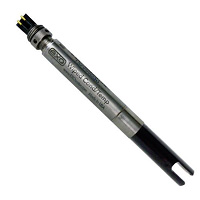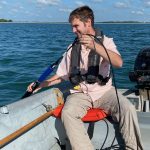
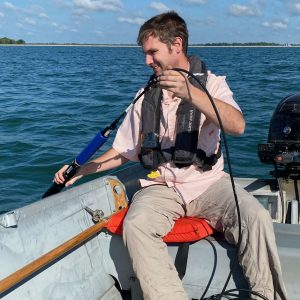 Clean drinking water is necessary for all human life, and source water monitoring is the first step in the long process of converting source water into tap water. Millions of people rely on the work of analysts like Michele Gilkerson, a water research analyst with the City of Columbus Division of Water, to convert wastewater into potable water.
Clean drinking water is necessary for all human life, and source water monitoring is the first step in the long process of converting source water into tap water. Millions of people rely on the work of analysts like Michele Gilkerson, a water research analyst with the City of Columbus Division of Water, to convert wastewater into potable water.
Source water monitoring gives treatment plants insight into incoming water conditions, allowing them to begin taking the necessary measures to properly treat such water. Without data collected and analyzed by Gilkerson and her team, plants would be ill-prepared for poor water quality. In the case of nutrient-rich water loads, specific technology is required to treat the water in addition to the treatment plant’s usual procedures.
Challenge: Meeting Safe Drinking Water Act Standards
For example, a nitrate event that goes improperly treated can be the beginning of a taste and odor event—wherein the water may meet Safe Drinking Water Act standards but tastes or smells strange to the average consumer. While not always an indicator of safety, making sure drinking water meets expectations is important to protecting the relationship between the division and the public who rely on them for water.
In addition to meeting consumers where they are, drinking water is also the subject of many health and environmental policies and regulations. Meeting these requirements can be challenging for agencies like the Division of Water as the demands are strict, and groups often have little time to adjust to the new standards.
For example, perfluorinated alkylated substances (PFAS) are monitored by the division, and new recommendations from the EPA require a value as low as four parts per trillion. While PFAS can be treated through powder-activated carbon, the high demand for the product may introduce cost and supply issues as the recommendation is enforced throughout the U.S.
Solution: Real-time and Discrete Sampling
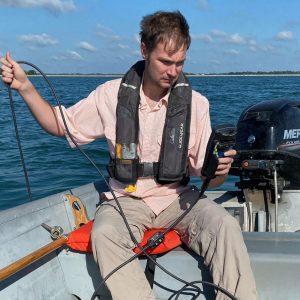 In order to meet the demands of consumers and regulation agencies, Gilkerson’s team spends their days conducting discrete sampling and observing real-time data gathered by NexSens data loggers and a YSI winch that profiles the water column.
In order to meet the demands of consumers and regulation agencies, Gilkerson’s team spends their days conducting discrete sampling and observing real-time data gathered by NexSens data loggers and a YSI winch that profiles the water column.
The logged data is transferred and accessible remotely through the WQData LIVE portal. The portal allows Gilkerson to instantly access data for all three of the active plants, saving the time needed to travel to each sight and providing all of the data in one spot for easy trend-spotting.
Field measurements are conducted through measurements taken with a YSI EXO1 Sonde at multiple depths. Dissolved oxygen, pH and conductivity are the primary parameters monitored though additional measurements are also conducted when necessary.
Benefits: Convenience and Early Action
The combination of real-time monitoring and discrete measurements allows Gilkerson and her team to be eyes for the water treatment plant. Alarms integrated into the WQData LIVE platform allow the treatment plants ample time to respond to various events as well as instant access to all of the stations surrounding the various plants.
Prior to the introduction of real-time technology, the city relied on discrete sampling for water quality data, which failed to capture events in the waterway entirely. The profiling system now used by Gilkerson takes readings every 15 minutes and downloads every hour, giving a good snapshot of the source water—including events that could impact the quality of drinking water.
In the case of a nitrate event, the plant can prepare for the incoming nutrient-rich water by turning on the ion exchange that the City of Columbus invested $40 million into constructing. “We’re not going to be caught not being able to turn on the ion exchange and having another maximum contaminant level (MCL) violation where we have to issue a public notification for nitrate exceedance,” elaborates Gilkerson.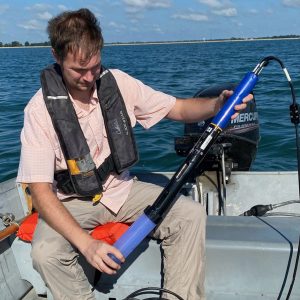
The Bottom Line
Ultimately, access to safe drinking water is a matter of public health and ensuring the treatment plants have all of the data needed is vital to achieving this goal. Real-time monitoring systems, like those deployed in Columbus’ three water treatment reservoirs, allow plants to be prepared for incoming water quality, ensuring that drinking water meets guidelines as well as consumer expectations for taste and smell.
The convenience of data-sharing and real-time alerts available through the WQData LIVE portal have been game-changing for Gilkerson’s work and much of the source and wastewater monitoring industry. “We’re all in this together. And so things that Fondriest and NexSens are doing, I believe, are really instrumental in helping the water utilities industry and professionals,” states Gilkerson.
Equipment
WQData LIVE is a web-based project management service that allows users 24/7 instant access to data collected from remote telemetry systems.
The YSI EXO represents the next generation of water quality instruments from YSI. The EXO1 sonde includes four sensor ports with internal data logging and battery power.
The EXO optical dissolved oxygen sensor is a digital smart sensor featuring welded titanium construction and wet-mateable connectors.
The EXO unguarded pH sensor is a digital smart sensor featuring welded titanium construction and wet-mateable connectors.
The EXO wiped conductivity & temperature sensor is designed for the EXO2 sonde with central wiper to reduce cleaning requirements in unattended deployments.


